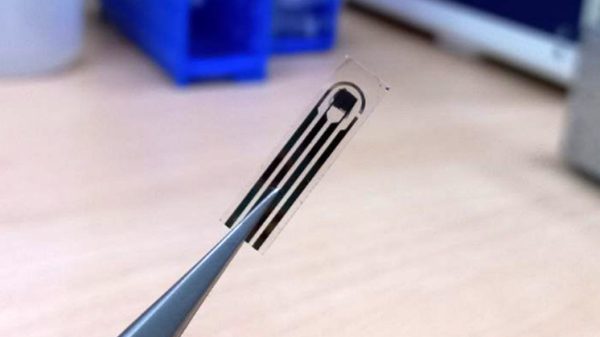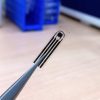
MOSCOW, November 14. Previously unknown properties of nano- and micro-sized liquid crystals have been discovered by IKBFU scientists. According to them, the data obtained will allow the development of a new family of subminiature electro-optical sensors and a number of powerful medical analyzers for both laboratory and home use. The results were published in the Journal of Molecular Liquids.
Liquid crystals (LCs) are a special state of a substance in which it simultaneously has both fluidity and crystal-like structural properties. LCDs are extremely sensitive to any external influences, they are strongly affected by even very weak electric and magnetic fields and small changes in temperature.
< /span>
One of the important areas of research on LC structures is the study of the processes of transport and sorting of nanoliter LC droplets in branched channels under the influence of an external electric field, experts reported.
New results in this area are in demand when creating sensitive sensors and detectors. Compared to other microsensors, they will have a simple design, miniaturization and high adaptability, low control voltage, the scientists explained.
Researchers from the Immanuel Kant Baltic Federal University (IKBFU) conducted a comprehensive modeling of fluidity processes in micro- and nano-sized LCs -systems. The data obtained, according to scientists, make it possible to correctly predict a wide range of processes during the technological processing of liquid crystals and select their optimal compositions when designing various systems.
“
“Optical and other experimental methods for studying LC structures are virtually impossible today, so we focused on comprehensive numerical modeling. We discovered and confirmed a number of previously unknown effects concerning the influence of channel walls and other factors on the fluidity and associated electro-optical properties of LCs,” said Associate Professor of the Educational and Scientific Institution “MEDBIO” IKBFU Pavel Maslennikov.
The ability to instantly switch the electro-optical characteristics of the same LCD system makes these materials ideal elements for the development of new biomedical devices, the scientists explained. According to them, these can be either mobile home devices for rapid analysis of cells, tissues and biofluids, or powerful laboratory instruments.
“Optical sensors based on LCD materials can completely eliminate the need for chemical markers and tags introduced into the body, since LC molecules enhance the optical signals of biological structures. In the future, thanks to them, it will be possible to create multifunctional “laboratories on a chip,” said Maslennikov.< br />
In addition, studies of the behavior of LC materials at interfaces are of great importance for the study of many biological systems, since, for example, cell membranes, phospholipids, cholesterol, DNA and a large number of other body structures exist in a liquid crystalline phase, the scientists emphasized.
In the future, the scientific team intends to continue fundamental research into the general structural patterns that arise in micro- and nanoliter volumes of liquid crystals under the influence of an electric field and laser radiation.
< br />























































Свежие комментарии